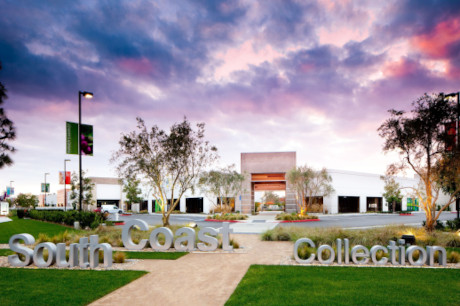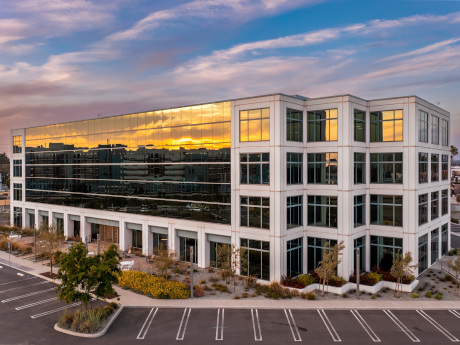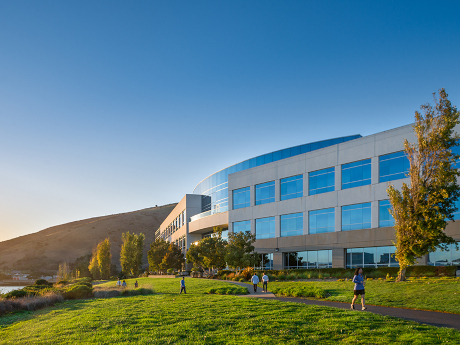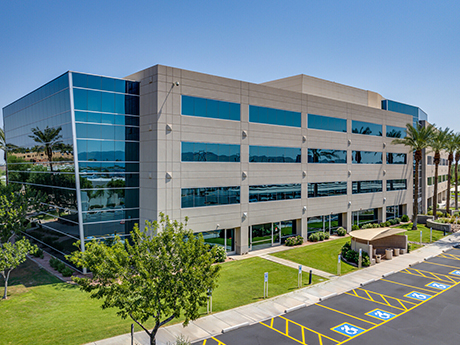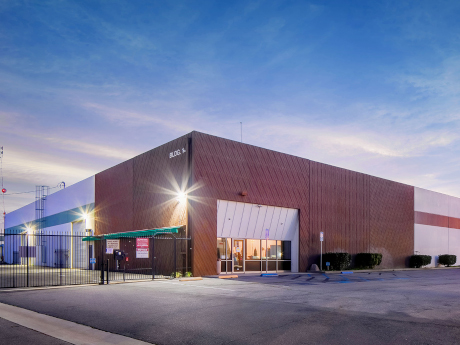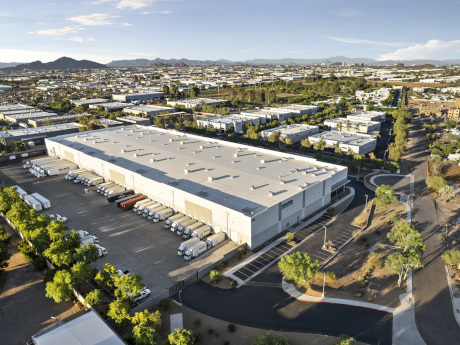The South Coast Metro area — consisting of north Costa Mesa and south Santa Ana — has been a hotbed of activity lately. Toyo Tire Holdings of Americas (TTHA) leased 60,000 square feet in the Harbor Gateway Business Center in early January. The Gateway is situated at the northwest corner of Harbor Boulevard and Sunflower Avenue near freeways, major thoroughfares, apartment communities, shopping, dining and entertainment. In addition to that, the 2,500-acre, 3.5-square-mile Metro area is home to a Theater & Arts District that boasts performance venues like the Renée and Henry Segerstrom Concert Hall and the Tony Award-winning South Coast Repertory. It also has South Coast Plaza, a retail mecca that includes 280 boutiques and restaurants, with an additional 100 restaurants situated within about a one-mile radius of the shopping center. This activity has not only benefitted the nearby businesses, residents and visitors, but the South Coast Metro Alliance as well. The non-profit corporation of property owners and major businesses added three new corporate partners last year, including Related California, Travel Santa Ana and Breeze IT. Related California is the West Coast affiliate of Related Companies, a fully integrated real estate firm that develops multifamily residential and mixed-use properties …
Western Market Reports
— By Mike Adams, managing director, office investor services, Stream Realty Partners — The Orange County office market, like many others, is undergoing significant shifts as tenants reassess their office space needs in the wake of the ongoing transition to hybrid work models. Despite persisting challenges, recent developments suggest certain market segments are showing signs of recovery. This, naturally, sparks optimism that the worst of the downturn could be behind us. A key indicator of this positive shift is the noteworthy net absorption of 231,744 square feet, marking the first positive trend since the second quarter of 2022. Orange County’s Airport area has emerged as a leader in this office recovery, witnessing move-ins totaling 204,376 square feet. While the overall market grapples with challenges, such as a slight increase in the unemployment rate and mixed performance in office-using sector jobs, there are pockets of improvement, especially in the Class A segment. This positive absorption has contributed to a 10-basis-point decline in the total vacancy rate quarter over quarter, dropping from 18.7 percent to 18.6 percent. However, when viewed year over year, the increase from 16.4 percent highlights the enduring impact of recent economic challenges. The current vacancy rate remains notably …
— By Alex Browne, life sciences research director, Transwestern Real Estate Service — The San Francisco Bay Area life sciences market has been resilient in the face of the economic headwinds of the past 18 months. Despite the mix of issues besetting other commercial real estate asset classes, life sciences assets have fared well, with quality science continuing to thrive. Any shifts within the life sciences sector have been among the landlords and tenants, as the change in deal influence has varied over the past 12 months. Starting in 2017, the bulk of the deal leverage was on the landlord’s side. This, in turn, sparked an appetite for new development looking to meet the increased demand. It wasn’t until 2022 that the tide began to turn, with tenants gaining more leverage in negotiating renewals or electing to search for more favorable, high-quality space. Even though the market’s activity tends to be overshadowed by industry headlines, deals are being done, and space is being delivered and absorbed — albeit at a slower pace. The Bay Area continues to be the second-largest life sciences hub in the nation, with healthy industry drivers that continue to fuel innovation. The region is home to …
— By Kyle Seeger, Vice President, JLL — Like office markets across the U.S., Phoenix continues to navigate its post-pandemic “normal.” But with red-hot population growth, a comparatively low cost of doing business, a dynamic office inventory and a stellar quality of life, it also remains a prime contender for new office locations, relocations and expansions. Metro Phoenix’s overall office vacancy rate had ticked up slightly to 25.6 percent at the close of 2023. Average annual rent growth had decelerated moderately to 0.8 percent year over year, but remained positive. The overall direct asking rent had stabilized at just over $29 per square foot. Although negative absorption remained markedly high at more than 3.5 million square feet through 2023, there was less quarterly loss in the fourth quarter compared to the third quarter. Amid all of this, Phoenix’s cost and demographic advantages — along with its ample inventory — pushed leasing momentum forward. In some cases, it even created positive net absorption, such as in prime office corridors and in newer, highly amenitized Class A projects. The Grove, a 180,000-square-foot, Class AA office building in the Camelback Corridor, is a prime example of this. Within 16 months of its mid-2021 …
— By Zach Middleton, senior associate, The Klabin Company/ CORFAC International — Last year brought significant change to the industrial sector across the country. Orange County was not immune to general market factors that were influenced by a sharp rise in interest rates, growing vacancy rates, shallowing tenant demand and increased supply. Fortunately, Orange County remains resilient heading into 2024 due to its prominent geography harbored by major distribution routes along the 5 and 91 freeways, as well as the county’s proximity to the ports. Orange County also proudly showcases one of Southern California’s most diverse tenant pools. This is spearheaded by key sectors like technology and innovation, research, healthcare and biotechnology, manufacturing and aerospace, consumer goods, ecommerce, wholesale and distribution, underscoring its economic versatility and potential for sustained growth. Market breakdown: vacancy rate uptick still below historical average Current vacancy rates across Orange County are as follows: • North County – 2.4% • West County – 4% • South County – 3.5% • Airport – 2.5% Vacancy rates have trended upward but remain below the historical average of 4 percent. A growing number of cheaper sublease options and the slight uptick in vacancy rates have influenced direct deal …
— By John Kobierowski, President/CEO, ABI Multifamily — Phoenix has experienced a surge in population due to its favorable climate, affordable cost of living and thriving job market. Since 2012, Phoenix has seen an average of 1.6 percent in population growth per year versus an annual U.S. average of 0.6 percent. The city’s allure is particularly strong among young professionals drawn to its continued job growth and retirees seeking sunny skies. This rising demand has translated into increased rental rates and occupancy levels over time, making the Phoenix market highly appealing to investors seeking stable and profitable ventures To meet the rising demand for multifamily housing, developers have ramped up construction activities in Phoenix. There are 40,459 new construction projects planned for 50-plus-unit construction. The market has also witnessed an escalation in the number of new projects — 28,841, according to Yardi). These include luxury apartments, mixed-use developments and affordable housing options. These projects not only cater to professionals, but target Millennials and members of Generation Z, who are increasingly gravitating toward rental properties. However, ABI Multifamily outlook sees a substantial drop-off in completions starting at the end of 2024 through 2025 as a result of increased pricing in materials, …
— By Brandon Banks, Managing Director, Midloch Investment Partners — A funny thing happened coming out of the COVID crisis. It’s not something I would have expected, but it makes sense. Perhaps it was just a question of when. For the first time since the Great Recession, some Western and Sun Belt markets have cooled to a point where value investors are seeing attractive investment opportunities in their midst. As is the case nationally, some of these deals are the result of higher interest rates and reduced proceeds pinching (if not punishing) over-leveraged sponsors that need to recapitalize their properties, but still the trend is apparent. I’m a native Westerner from the Sacramento area, and it’s almost by nature that we expect Western markets to grow faster than the nation as a whole. In fact, the West has seen largely nothing but high notes over the past 10 to 15 years. This includes consistently increasing asset values, low-priced capital, and supply and demand in relative balance, with a seemingly perpetual undersupply for some property types in many markets. Today, the West and Sun Belt still shine brightly…generally speaking. But even in these areas, the post-COVID cooling has been pronounced. Some properties …
— By Anthony Lydon, Executive Managing Director, JLL — At $403 billion in annual gross domestic product, Arizona is now the nation’s 18th largest GDP economy, recently passing Minnesota and Indiana. With its expected growth over the next 24 months, the state is on track to become the nation’s 16th largest GDP economy, surpassing Tennessee and Maryland. Like a shortlist of other fortunate U.S. markets, Arizona can credit a portion of this growth to its thriving logistics sector. The potential that industrial real estate offers for nearshoring — that commanding force with the power to rapidly diversify and expand a local economy. In Arizona alone, every $1 spent in the logistics industry has a $2 to $2.50 “multiplier effect” in the categories of earnings, revenue and jobs. The ability to capture that growth has been transformed in recent years by the CHIPS Act. This has provided, among other things, a 25 percent tax credit for investing in facilities that manufacture semiconductors or related manufacturing equipment. The Inflation Reduction Act has also provided more than $270 million in tax credits for clean energy projects involving solar, wind, hydrogen, carbon sequestration and EV charging. These programs played a role in attracting TSMC, …
— By Mike Ballard, Partner, Ascent Multifamily Accounting in Las Vegas — Las Vegas — known for its vibrant entertainment scene and thriving real estate market — is experiencing the early signs of a recession. With one of the most substantial construction forecasts in the nation, the Las Vegas multifamily real estate sector is poised to witness a surge in supply with 8,000 units to come online by 2025, according to Avison Young. However, despite the anticipated surge in deliveries, the Las Vegas market has seen fewer construction starts this year. We can anticipate that the Valley will once again have a shortage of rental housing in 2025 and 2026, which will increase rents and cause concessions to evaporate. It is also anticipated that up to 10 percent of commercial real estate within the Valley may face foreclosure in the next 18 months. The city is currently experiencing one of the highest rates of foreclosure in the country, with nearly one in every 1,800 homes experiencing foreclosure. This can be attributed to high interest rates and the prospect of a recession forming a dark cloud over the nation’s real estate market. According to CoStar, quarterly multifamily sales volume has yet to eclipse $150 million in 2023. The surge in supply is also …
— By Rob Martensen, Vice Chair, Colliers International — What’s hot in Phoenix’s industrial market? This is a question we get asked a lot from developers and property owners looking to enter our region. The topic of conversation is mostly centered around the amount of space under construction in the Phoenix MSA and what parts of town are seeing the most activity. In the past, we had submarkets that would be more or less attractive, and we would steer clients in that direction. Today, however, the entire Phoenix metropolitan area is in play for tenants and owners. Greater Phoenix has been fortunate to land several “whales,” large corporations that bring multiple suppliers with them. Naturally, the one most talked about is Taiwan Semiconductor Manufacturing Corporation (TSMC) in North Phoenix. TSMC took down nearly 1,600 acres of land to build a $12 billion chip making factory. The company has since announced it will immediately commence construction on Phase II of the project. Intel is another chip manufacturer that has had a presence in nearby Chandler, but is now under construction on a $20 billion expansion. Both of these undertakings will continue to feed companies that move to Phoenix and support not …


